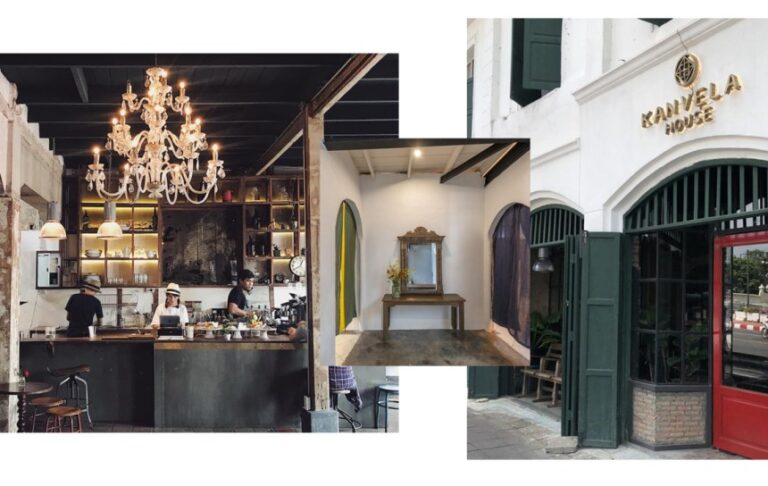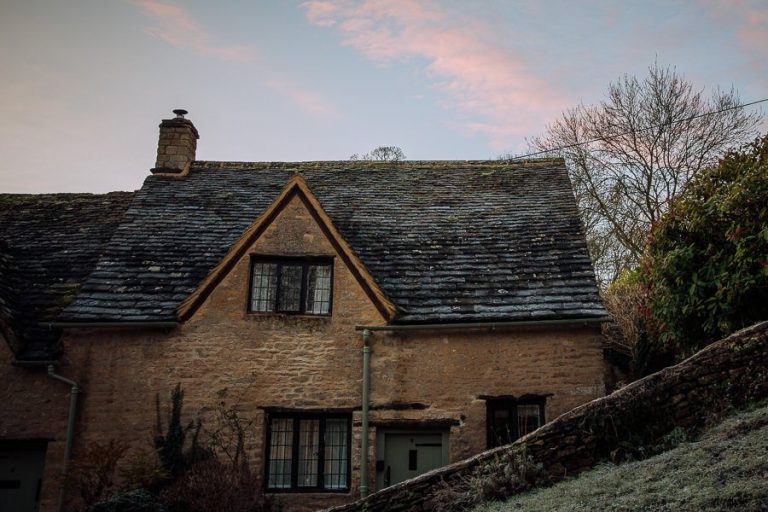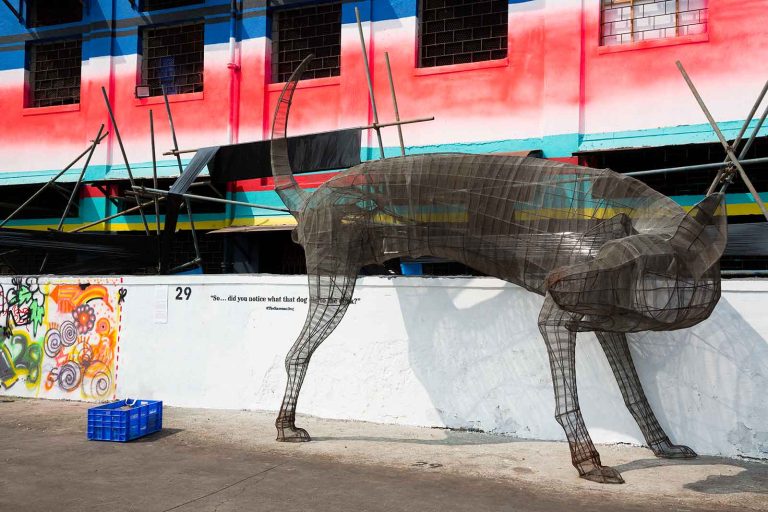If you’ve merely even glanced at itineraries for Colombia, you’ll surely already know of Salento, one of its most-mentioned destinations.
This mountain town is just a short hop from Cocora Valley, home of the world’s tallest wax palms. These trees reach up to 100+ meters (320 feet) and spear up from the ground like massive sailing masts all around the valley. It’s a surreal and wondrous sight, especially when seen at sunset or when shrouded in the morning mist.
Yet if there’s one consistent message I heard from travellers on the Colombia trail in 2022, it’s that Salento itself is really overcrowded.
So is there a better way to see the wax palm trees in Colombia?
What’s Salento like?
I first visited Salento in 2014 when it was quite a sleepy town. Since then, many French and Dutch owners opened new hostels and hotels in Salento. It quickly developed into a highly trending destination.
Salento is now the third most-visited place in Colombia (or at least, so I’ve been told, which I don’t find hard to believe). It’s a lot to absorb for a town with a population of just over 7,000.
To be fair, the town is not quite overtouristed, but it’s definitely very busy and commercial. It does still have its charm and you may appreciate Salento for its easy-to-book tours and international food options (including veggie and vegan places). If you’re not excited about having yet another greasy arepa, then you may relish the opportunity to finally have a healthy salad bowl.
Still, the typical refrain from travelers is, “Well, we loved Corora Valley, but…”, followed by some grumbling about the town.
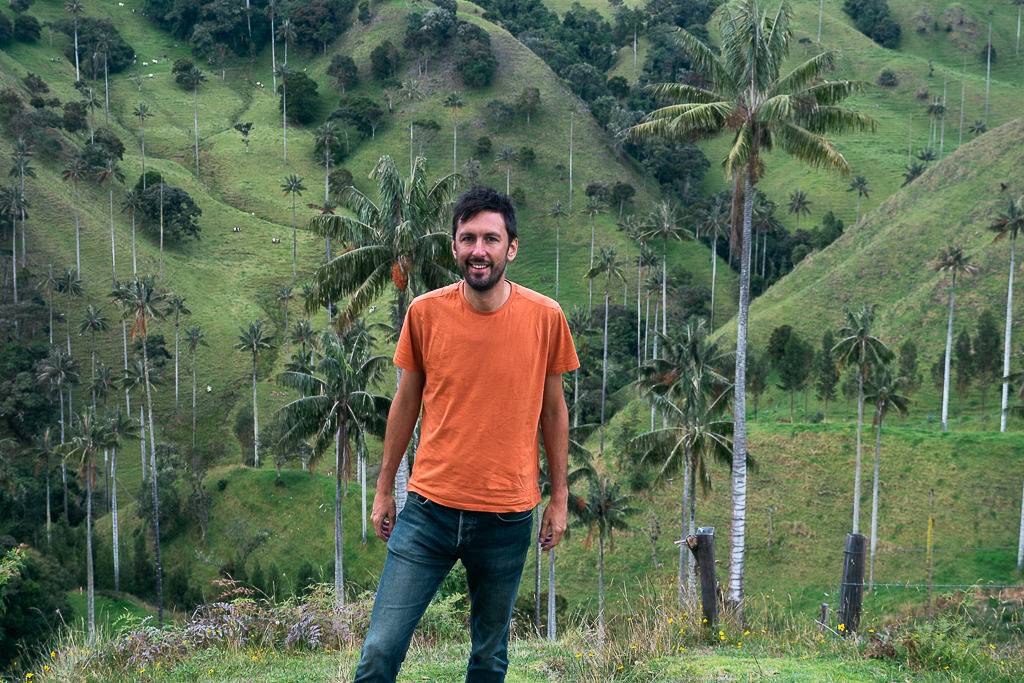
This made me determined to look for some alternatives to Salento. I’m here to tell you that you can, in fact, still see the giant palm trees that are Colombia’s national symbol, while also going somewhere much less trodden.
Allow me to spill the frijoles.
Alternative 1: Filandia & Cocora Valley
Filandia is the first and easiest alternative to Salento to consider.
This town is only a 30-minute drive further west from Salento but has a very different character. It’s only mildly touristy and not nearly as trampled, yet it’s still within very easy day-trip range of Cocora Valley.
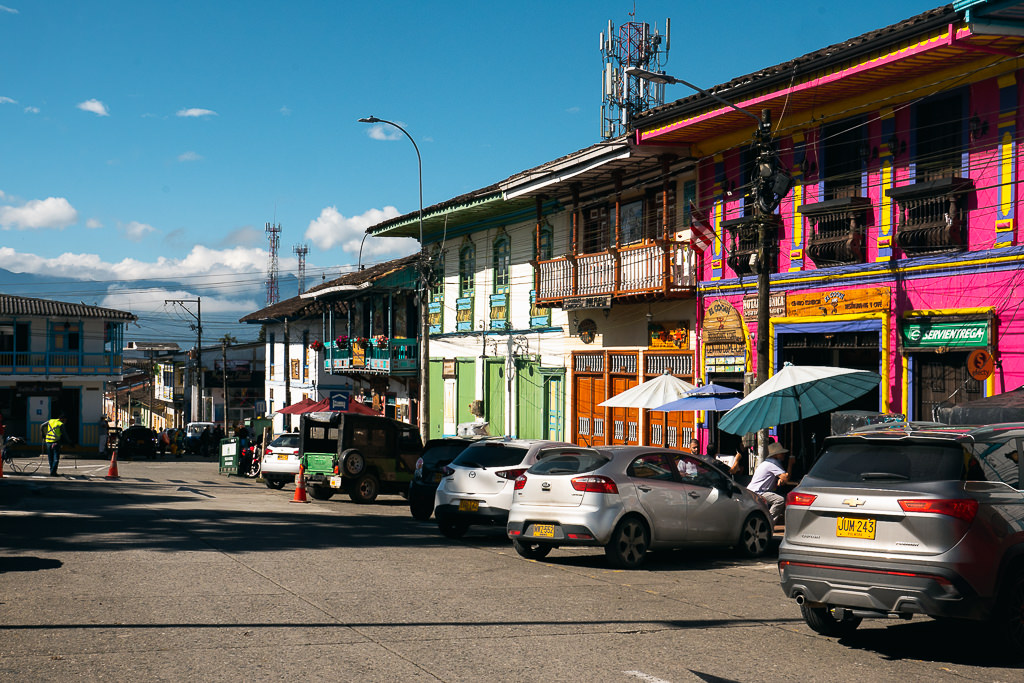
(Yep, the town is named after Finland. No, I don’t know why — and there aren’t any saunas. Strangely, you’ll also find places nearby named after Armenia, Italy, Montenegro, Arabia, and more. I guess the early settlers just had a theme going?)
The colourful colonial town rests on top of a hill overlooking the rolling green hills of the coffee region. A string of restaurants on the north side offer stunning sunset views of the landscape in addition to some amazing food — in particular, don’t miss Helena Adentro or Cultivar.
I stayed at Bidea Hostel, a somewhat labyrinthine and cozy hostel with a great atmosphere that I can highly recommend if you’re traveling on a budget or if you enjoy staying in a hostel. You can check availability at Bidea Hostel here.
For something a little more upscale, I suggest the boutique hotel El Reloj Casa. Outside of town and among the coffee fields, you can also find a beautiful Selina hostel on the site of a former coffee farm which offers everything from bungalows to glamping to hotel rooms.

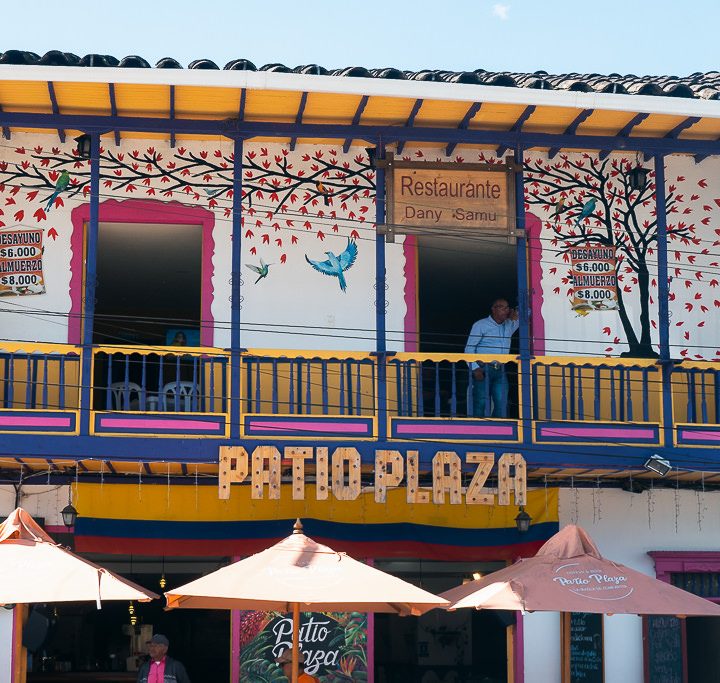
I rented a bicycle in order to better explore the town and its surroundings. Taking a random turn, I ended up at a cow market where cowboy hat and poncho-wearing ranchers were busy auctioning their cattle. It was a lovely local scene of the kind you can easily stumble upon in Filandia.
But Filandia also has several third-wave cafes, restaurants with different cuisines, and a smattering of boutique hotels and high-quality hostels, so you can enjoy plenty of good things during your stay.
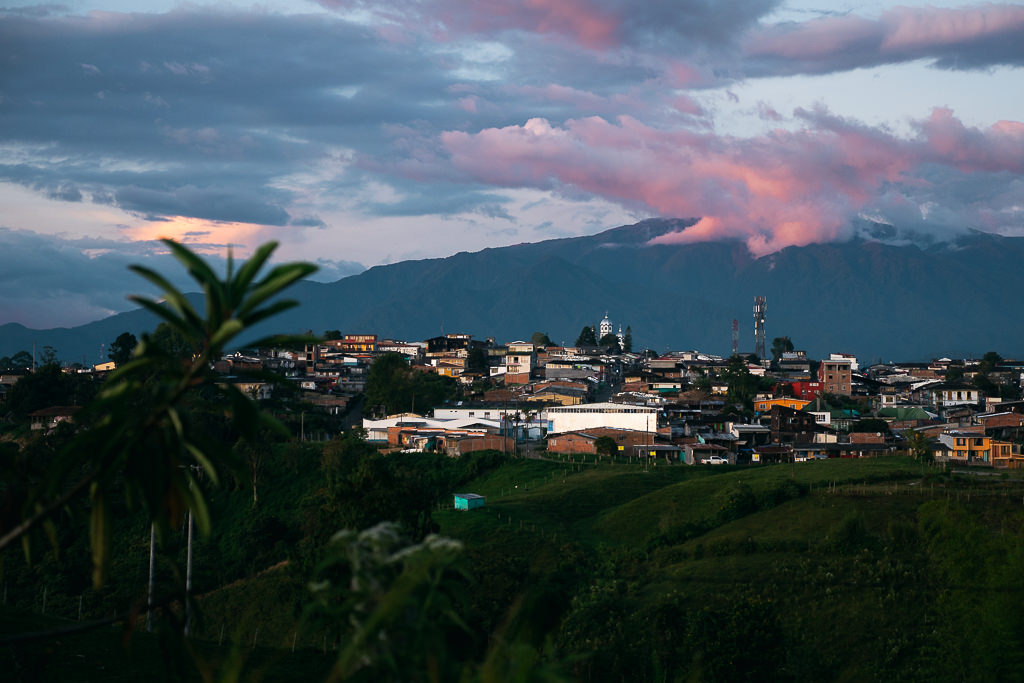
I should mention that Filandia is a popular weekend destination for Colombians, so you can expect it to be a bit busier then. This just makes it more fun and lively though, rather than becoming too crowded.
Around Filandia you can visit nearby coffee farms, go mountain biking to the town of Quimbaya, hike to hidden waterfalls, or visit the Barbas-Bremen reserve where you have a chance at spotting howler monkeys. You can then take a day to see the stunning palm trees in Cocora Valley.
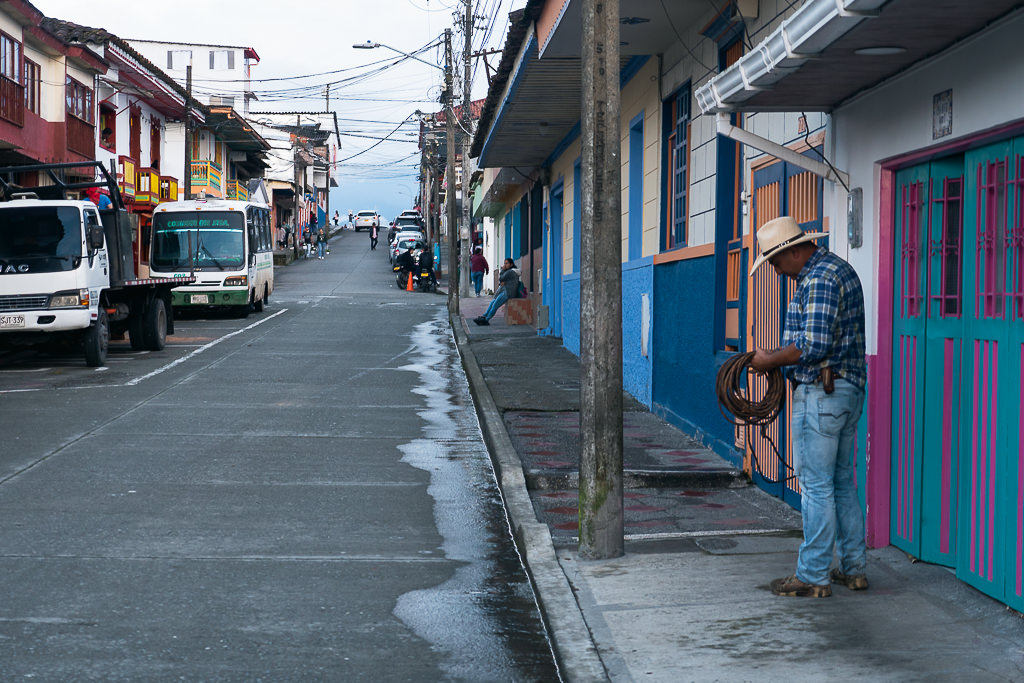
How to get to Filandia
It’s easiest to get to Filandia from the city of Armenia. From the Armenia bus terminal, there are services to Filandia about every 20 minutes. The journey takes about 45 minutes. You can also take a bus from Pereira, but these go only about once every hour.
Tip: if you’re coming to Armenia from the direction of Pereira or Manizales, you can ask to get off at Las Cruces. It’s just a road crossing, but there are a couple of shops/restaurants; wait there for the bus to Filandia. This can cut about an hour from your journey time.
How to get to Salento from Filandia
There’s a direct jeep service from Filandia to Salento. The jeeps depart from the main square of Filandia at 8.40 am, 10.40 am, 12.40 om, 14.10 pm, 16.10 pm and 18.10pm. It costs 5,500 COP one way and takes about 40 minutes. Get another jeep to Cocora Valley in the main square of Salento, or you can hike there (a loop around the valley takes about 4 hours to hike).
Alternative 2: Salamina & Valle de la Samaria
Okay, now we are truly talking ‘secret’.
It seems almost no one on the Colombia travel trail has heard of Salamina. I had only read one other blog about it — and it was in Dutch.
Salamina is another small town in the coffee-growing region with colourful colonial-era houses. Despite being recognized as one of the heritage towns of Colombia, it doesn’t appear in any of the usual itineraries.
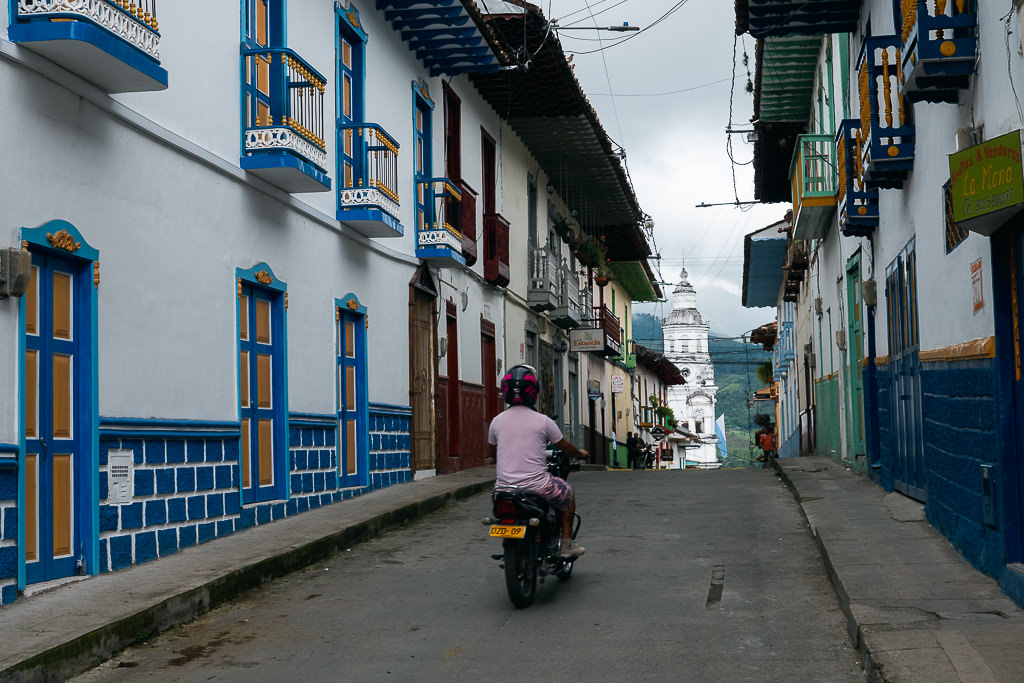
The town sits pretty on top of a mountain with gorgeous views in every direction. There aren’t that many activities you can do, as it’s not really a big tourist attraction with organized activities, but you can do your own hikes in nature. It’s also fun just to walk around and see all the jeeps loaded with bananas, ranchers shopping for new hats at the artisanal hat shop, and other scenes of local life.
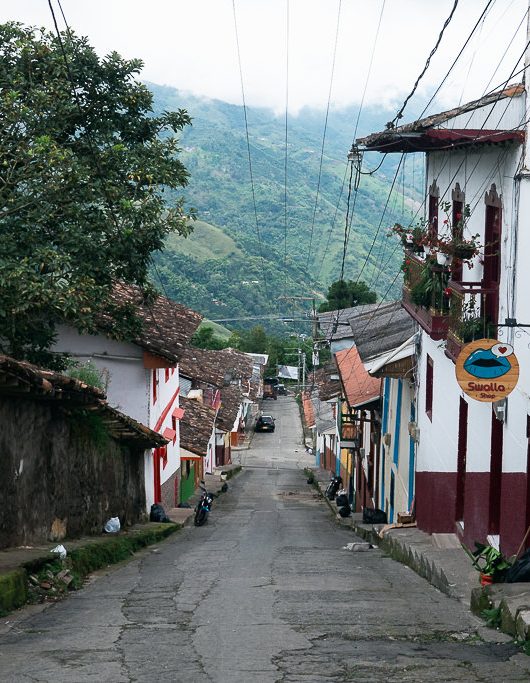

The authentic town in itself is a reason to come, though it’s also from here that you can reach the Valle de la Samaria, which is a wonderful alternative to the Valle de Cocora. To get there, you first have to travel from Samaria to the village of San Felix.
Altogether it takes more time and effort than Cocora Valley. However, it’s worth it if you’d love to go somewhere more secluded and special.
I stayed at Bonsai Hotel Salamina, which seems to be the main choice among budget travellers. The rooms are perfectly decent, the owners very friendly, and the balcony at the back offers lovely views. For a more upscale option, consider the Boutique Hotel La Leyenda 1860, which features a central courtyard inside a heritage building.
It’s possible to visit the valley on a day trip from Salamina. It takes about 1,5 hours by jeep to San Felix, from where you can hike 90 minutes or so to the main viewing point from where you can see all the wax palm trees. Make sure you check the departure times for the jeeps. The last one back is usually at 5 pm.
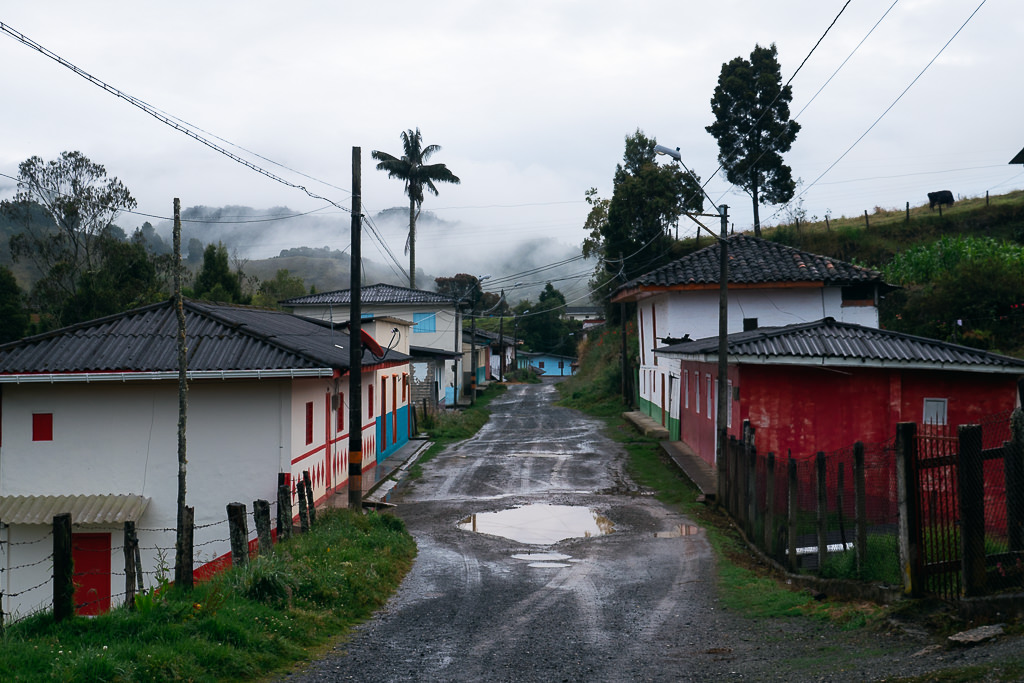
I opted instead to stay the night in San Felix. It’s a very small village; it has maybe only 3 restaurants, one convenience store, and about 3 places to sleep. It was fun to be in this rather low-profile village. Staying the night also gave me the chance to be in Valle de la Samaria at sunset without having to rush back to catch the last jeep.
In San Felix, I stayed at Hostal Casa Tucan, which is essentially a residential house turned into a guesthouse. It’s one of the only places to stay inside the town and it was practical for my purposes, though it’s better to stay in the eco hotels outside of town if you want to be in nature.
It’s an easy hike from San Felix to the valley (there are signs clearly showing the way). Be sure to stop at Mirador Valle de la Samaria, an eco-hotel and conservation project, where you can learn about the wax palm tree and the local ecology. For 5000 pesos, you can get a brief tour of their gardens and facilities.
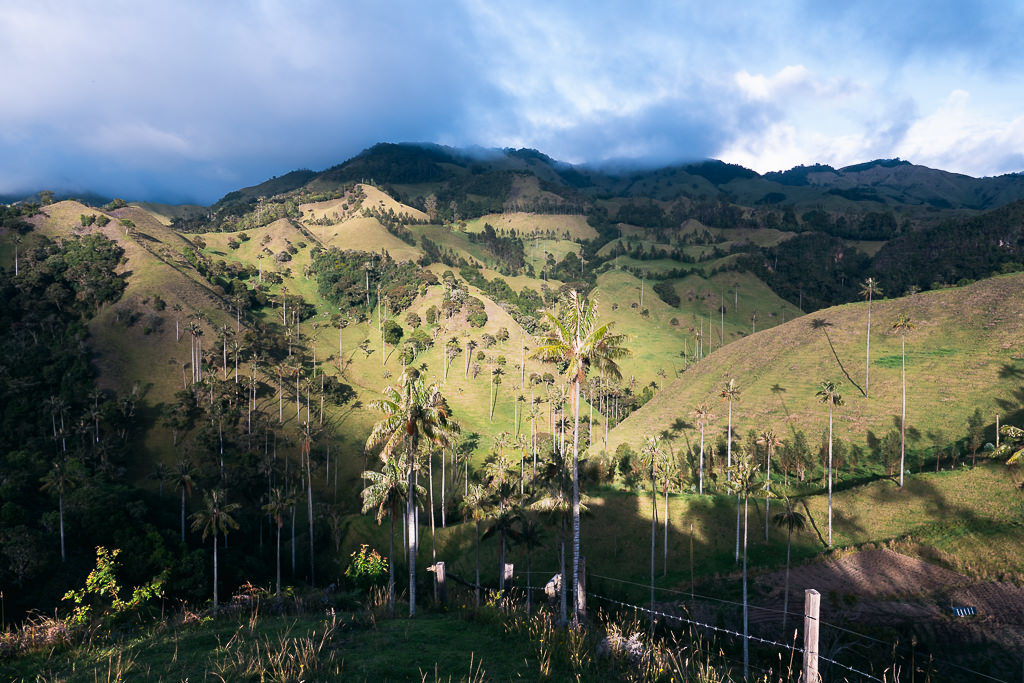
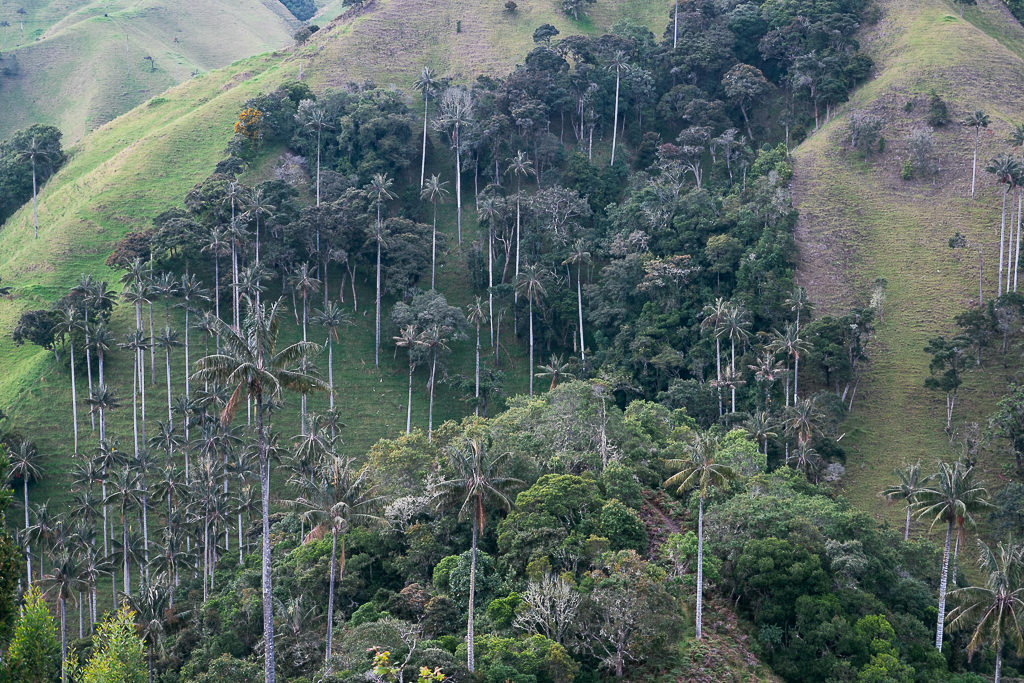
The owners are passionate about preserving and restoring the forest. They have a program for people to adopt a palm tree, which will get nurtured until large enough to grow on its own.
A big problem here and at Valle de Cocora is that the wax palm trees are not actually meant to stand alone. They would normally be inside a forest where they are much more protected. In the open fields, the palm trees’ seeds will wither easily in the sun or get eaten by cows. At the Mirador Valle de la Samaria, they ensure that seedlings and young plants will have the shade (and protection from cattle) they need to grow.

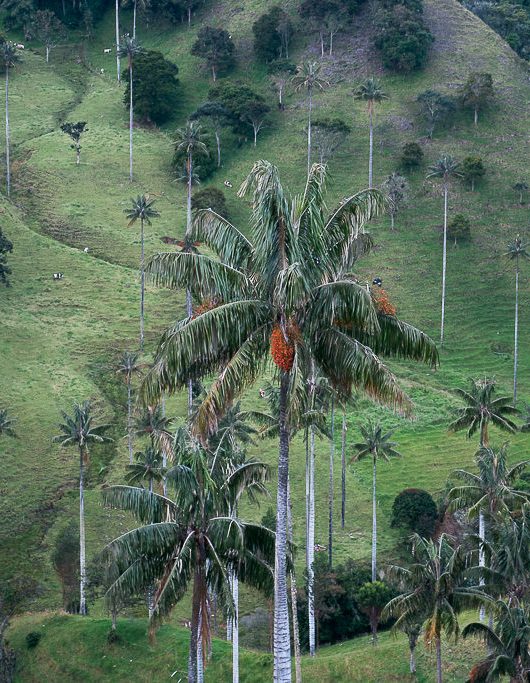

I made it to the viewpoint during sunset, which was simply glorious. It was utterly tranquil, only hearing the chatter of parakeets and parrots that make this valley their home and that feed off the palm trees.
I was kicking myself for not having enough time on my trip to stay the night as it’s such a magical spot. Mirador Valle de la Samaria offers several accommodation options, including a dorm, several cabins, and a totally secluded glamping tent offering panoptic views of the valley. Guests are served meals cooked using organic vegetables from the garden.

There is no WiFi at the eco-hotel; being in nature with barely another soul around is the main attraction here. Besides enjoying the views from the hotel, you can take a 3-hour circular hiking route around the valley (this is different from the hike to and from San Felix).
If you want to stay at Mirador, you should definitely make a reservation, as it’s one of the few accommodation options around. If it’s full, consider a stay at the nearby Eco Hotel Valle de la Samaria.

How to get to Salamina
It’s easiest to go via the city of Manizales. At the Manizales bus terminal, you can jump on a minibus to Salamina, or take a shared taxi. Four different companies run bus services and the journey usually takes 3 hours. The taxi service has its own desk where the bus tickets are also sold; the price is fixed at a reasonable 26,500 pesos. It takes about 1,5 hours by taxi with departures all day until 5.30 pm.
Alternative route: take a bus from Medellin or Jardin to Manizales, but get off early at the tiny village of La Felisa. From here it takes three local taxis or Chivas via other towns up to Salamina. I was dissuaded from doing this by a bus driver who made it sound difficult, but I later heard that it can be a really wonderful adventure (just quite slow). With this route, you’ll skip the city and only travel through the mountains.
How to get from Salamina to San Felix
Jeeps to San Felix depart next to Salamina’s central marketplace (it’s marked on Maps.me). They go several times a day; inquire locally at the tourist office for the exact times. The trip takes about 1,5 hours. I tried to persuade a normal taxi to take me to San Felix, but they insisted only the jeeps go there. Try to sit at the back of the jeep for the best views.
From San Felix, the first jeep in the morning to Salamina goes at 7 am. There is also a minibus at 6.30 am that does the trip in about 1 hour; after a 10-minute stop in Salamina, it continues to Manizales.
How to get from San Felix to Valle de la Samaria
It takes about 1.5 to 2 hours to hike there (one way). It’s a lovely hike along a dirt road, only a little uphill. You’ll see many palm trees all along the way. If you ask around in San Felix, you can also find a taxi to the viewing point, which should cost about 20,000 pesos one-way and take 15 minutes.
Alternative 3: Tochecito & Valle de Cauca
There is a third alternative to Salento: the little-known Toche (or Tochecito). It is located next to the largest concentration of wax palm trees in Colombia.
In Valle de Cocora there are about 2,000 wax palms. In Tochecito, there are estimated to be over 600,000. However, in Tochecito more of the palm trees are inside the forest, rather than standing alone.

Tochecito was actually once a dangerous no-go area, long contested between government forces and FARC rebels. Mind you, that was over a decade ago and now the area is safe. But the situation long kept Tochecito off the travel map, which is why it’s still less well known.
You can read more about the enormous palm forest in this article from a Colombian newspaper or this piece in the New York Times. The conflict kept scientists away for decades until it was finally safe enough to return to study the wax palms.
As I was already at the end of my trip, I didn’t have time to visit Tochecito, but I mention it here to be complete. Since the road to Tochecite starts in Salento, it may become the main alternative to Cocora Valley.
Valle de Cauca is also near Volcan Machin, which everyone will tell you is “one of the most dangerous volcanoes”. Its last known activity was actually 800 years ago. What this distinction really means is that, if it were to erupt again, it would do so rather violently.
Remarkably, there is a farm located right inside the crater. I guess they’re taking their chances.
You could go to Valle de Cauca independently if you have your own transportation by following the rural road from Salento. A few companies also run tours to the wax palm forests and/or Volcan Machin. For example, Salento-based Paramo Trek has a day tour that includes the wax palm forest, the volcano, and a stop at some volcanic thermal springs.
For accommodation, check out Hostal Faldas del Machín or the Santuario de Palma Las Cruces. They don’t appear on booking platforms so you may have to call them to make a reservation.
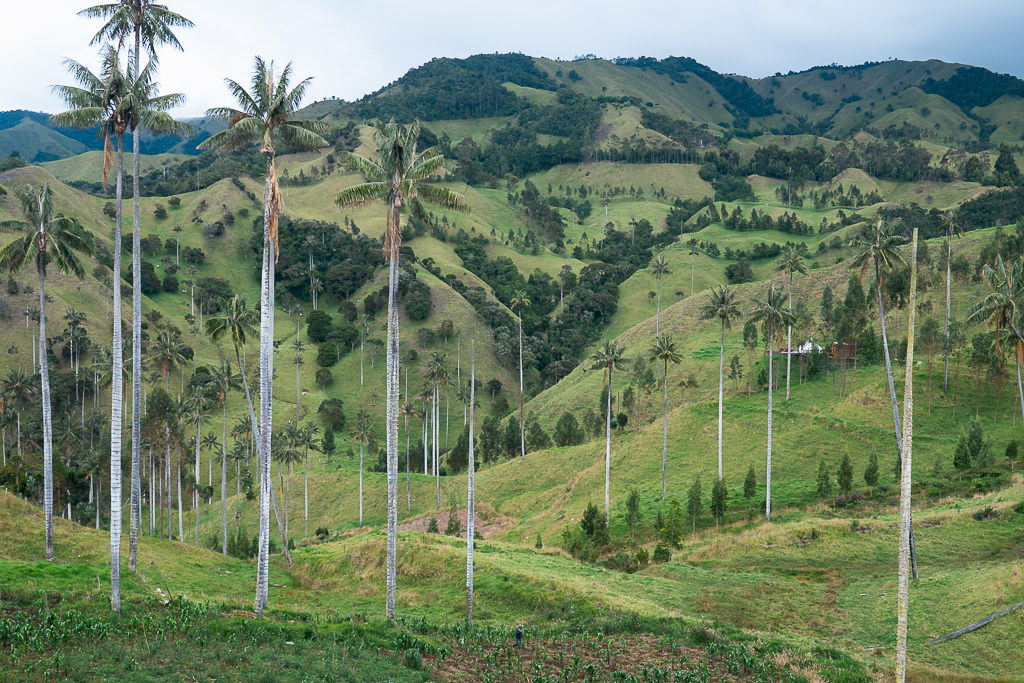
Is Salento worth visiting?
All this is not to say Salento is a bad place to go. Just that it’s far from the only place where you can go to see the wax palm trees in Colombia.
Yes, Salento is worth visiting for its charming colourful houses, its varied and trendy restaurants, the many local tour options, and for being an easy location from which to visit Valle de Cocora. However, Salento is also quite popular and crowded, so if you enjoy quieter places then it’s worth considering the alternatives to Salento.
Some links may be affiliate links, meaning I may earn commission from products or services I recommend. For more, see site policies.
Posted AUG 18, 2022 (Updated Sep 16, 2022)

